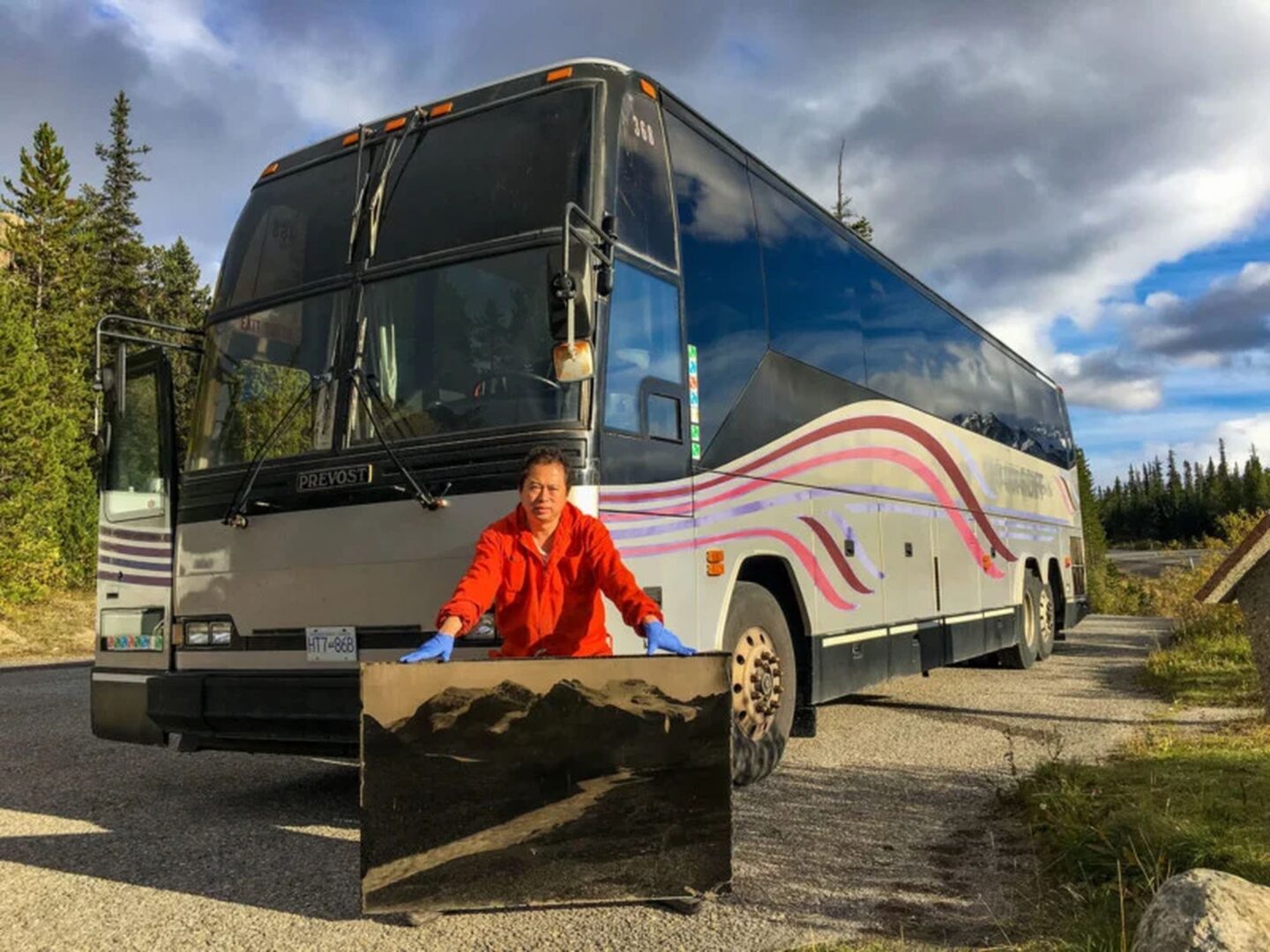
Bill Hao is a photographer from Vancouver who travels around Canada in his own bus with an huge camera. And all because he uses a rather rare photography process today — a wet collodion process. Photographer shoots picturesque landscapes of Canada. A comparison of Bill Hao with the famous Russian photographer Sergei Prokudin-Gorsky involuntarily comes to mind (August 30, 1863 — September 27, 1944), who traveled around the expanses of the Russian Empire in a special carriage-photolaboratory and conducted documentary photography of the Russian Empire.
Bill Hao started photography when he was 16 years old. He was in high school then. As his passion for photography grew, he experimented with various cameras — 35 mm, 66 mm and 67 mm (medium format), 4×5 inches and finally switched to a large format of 8×10 inches.
Bill Hao started photography when he was 16 years old. He was in high school then. As his passion for photography grew, he experimented with various cameras — 35 mm, 66 mm and 67 mm (medium format), 4×5 inches and finally switched to a large format of 8×10 inches.
Bill Hao participated in the Wetplate process in 2015. And in the same year, he made an 11×11-inch camera. Positive Wetplate images cannot be copied or enlarged. In order to get large pictures, the photographer had to make an even larger camera.

The camera was made of oak, black fabric and metal parts. Its plans and projects have changed many times, some parts have been rebuilt more than once. The laborious part was the creation of the fur. This camera is 100% handmade in his own home.

The dimensions of a fully open camera are 52 x 37 x 70 inches; fully loaded — 52 x 37 x 8 inches. The image size is 32 x 48 inches. With a plate size of 32 x 48 inches, the lens should also have a large rear projection circle. The photographer chose Carl Zeiss Tessar and Goerz Dagor lenses for his camera. Bill Hao has the largest lens — 1200 mm, with an image circumference of 1890 mm. There are other lenses — 900 mm with an image circumference of 1418 mm and 600 mm with an image circumference of 945 mm.
The weight of the camera is about 50 kg without a lens and a glass plate holder. The weight of the glass plate holder is approximately 20 kg. The camera is mounted on three massive tripod with a total weight of 10 kg. The glass plates themselves are also heavy. They are made of 3 mm glass. At the same time, Bill Hao says that he takes two dozen of these records with him to the shooting.

To store his images and prepared plates, the photographer made special boxes in which he stores glass plates, and this is his archive. All images are in a single copy, they cannot be repeated or copied, only reshoot with a conventional camera. Bill Hao claims that such a result does not convey the entire image quality compared to the original.

The creation of a huge camera and a mobile darkroom lasted from 2019 to 2021. Bill Hao needed all this in order to shoot large-format landscapes while traveling around the country. After that, the photos are developed using a wet colloidal process on plates measuring 32 × 48 inches.

The difficulty of shooting with a collodion-covered plate is that the photographer must be able to cover, expose and develop the plate in a wet state in 15 minutes.

Also, Bill Hao reminds that the wet collodion process imposes restrictions on the shooting process itself. Such a photo is too tied to the weather and even to the air temperature.

«It’s very difficult to shoot clouds, because the blue sky and clouds on the photographic plate look the same,» says Bill Hao.

However, the photographer does not back down and still tries to make clouds appear on the plates, but until recently, most photographers working with this technology did not succeed.
«I travel only for the sake of photography. Everyone thinks I’m crazy! But they also all envy my life just because I can do whatever I want,» Bill Hao says with pride.

